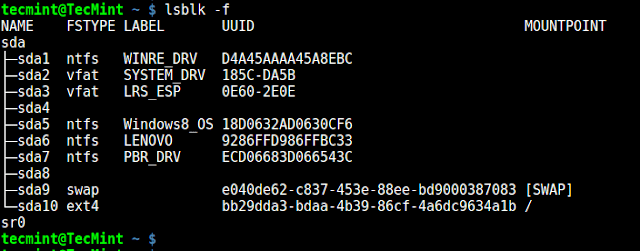Types of Linux File System That are Always Used
According to Wikipedia, in computing, file systems (or filesystems) are used to control how data is stored and retrieved. Without this system, a form of information placed inside the storage medium would be a large form of data without any way of knowing where it ends and begins. By splitting the data to several parts and giving each of the sections the name, the information will become easy to be isolated and known for sure. Ext4 has been an inattentive file system for Linux for so long. It is a file system that has been stable and less problematic than others.
For that, let's see what some kind of Linux File System that is often used and what are its characteristics.
Ext4: 'Ext' stands for 'Extended file system', the first file system created specifically for Linux. After that comes an increment to him starting from Ext2, Ext3 and so on Ext4.
Ext3 is an adder by adding the 'journaling' function to Ext2. Subsequently, Ext4 appears to have the feature of subtracting the fragmentation of files, justifying the size and the number of larger files being loaded into storage, and using a designated extension to extend the life span of flash memory.
Notes : What is Journaling?
Journaling is designed to reduce data loss from crashes, or lose power suddenly.
With this function, your computer will 'know' it will write or save / insert certain files to the disk in the journal, write the file into the disk, and extract the 'task' from the journal.
If the power supply is interrupted unexpectedly during a file being written, Linux checks the journal when it is booting and then countinue to any unfinished task. This indirectly reduces data loss and loss of important files.
But not a full file written into a journal. Only the metadata, inode, and location of the disk are recorded before they are written into the disc.
XFS: One of my favorite file system. It was created by Silicon Graphics in 1994 for the SGI IRX operating system and was moved to Linux in 2001. The advantage of XFS over Ext4 is that it can be extend (but can not shrink it).
XFS has a brilliant achievement to control large-capacity files, but it does not perform well on small files. Therefore, it is useful for users who need to control and manage large-size files for most of their time.
ZFS: Built by Sun Microsystems, ZFS has the characteristics of reducing data corruption, supporting large capacity stances, better data compaction, and more interesting features. Only it was sourced open under the Sun CDDL, which means it should not be included with the Linux kernel. But you can still try to use it ijn any distros. Each distro has its own wiki on how to format your disc to ZFS.
ArchWiki is the best example on how to install it in Arch Linux
BtrFS: Build by Oracle, BtrFS stands for 'B-Tree File System' called 'Butter' or 'Better FS'. Often reffered to as a substitute for Ext4, Ext4's organizer Ted Ts'o (Theodore Yue Tak Ts'o) considers Ext4 to be a temporary settlement when BtrFS is the future to the Linux file system.
Just make this time, BtrFS is still in 'Beta' and the characteristics that are implented are experimental.
Ext4 has generally has been used widely. It stability and easy operation make it the first choice. The presence of XFS, Btr Fs, and several others make users have the choice in ultilizing the disired features.
But most of Linux users will choose one of the above file system because there is no need to exprement (BtrFS excluded) with the system files that are in 'Beta'.


0 Response to "Types of Linux File System That are Always Used"
Post a Comment